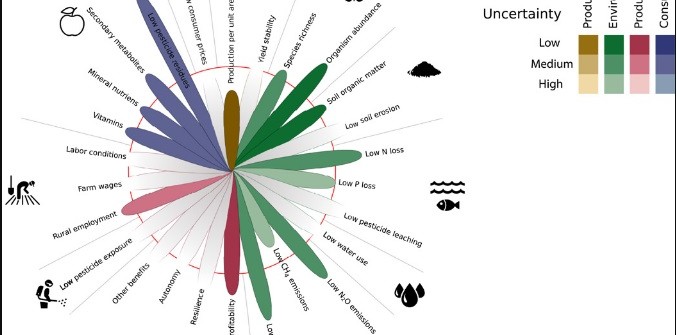Performance assessment of organic agriculture
A recent review assessed the benefits and costs of organic agriculture across four dimensions (production, environment, producers and consumers) with specific indicators. The review showed that organic agriculture has some clear benefits such as high local biodiversity, high productivity under some circumstances and livelihood for poor farmers in some occasions. However, there are issues with high uncertainty such as N availability and the total area required, influence on N losses from the system and accessibility. The review points out that the relative performance of organic compared to conventional agriculture depends highly on context. For example, organic agriculture performs better for yields of forage crops, for biodiversity of plants and pollinators in arable systems and simple landscapes, for water quality in arable systems using low N inputs, for livelihoods of farmers who participate in alternative food networks and who are located in regions with low labor costs, for consumer prices in CSA markets and for the health of consumers in regions with micronutrient deficiencies and high pesticide residues on food. On the other hand, organic agriculture performs less well for yields of cereal crops, for biodiversity of birds in pastures and extensive agricultural regions, for water quality of horticultural systems using organic amendments, for consumer prices in regular wholesale markets and for the livelihood of farmers without access to premium prices. The review highlights a number of policy targets to improve the performance of the organic agriculture.
More info: http://bit.ly/2qTraLo









